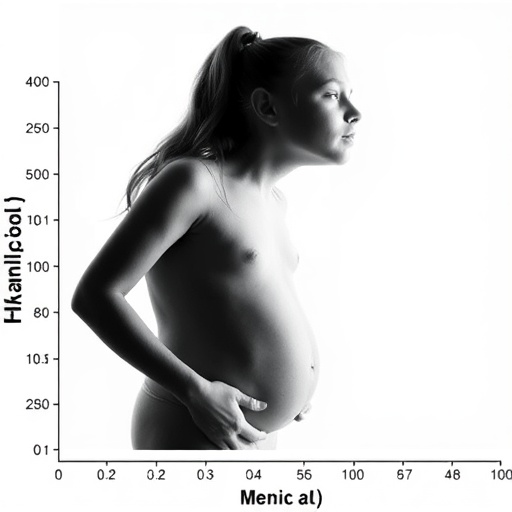
Credit: UA Health Sciences
TUCSON, Ariz. – According to the U.S. Centers for Disease Control and Prevention, 6.1 million children have been diagnosed with attention deficit hyperactivity disorder (ADHD) as of 2016. Symptoms of ADHD include trouble concentrating, paying attention, staying organized and remembering details.
Melissa Furlong, PhD, a postdoctoral fellow and epidemiologist in the Department of Environmental Health Sciences at the University of Arizona Mel and Enid Zuckerman College of Public Health, will study the link between prenatal and childhood pesticides and childhood ADHD. Findings from this research will provide some of the first estimates of the association between prenatal pesticide exposures and ADHD in children.
The study is funded by a $910,000, five-year career development grant from the National Institute of Environmental Health Sciences (K99ES028742). Dr. Furlong will focus on two types of pesticides widely used in agriculture, the home and gardens: organophosphates (OPs) and pyrethroids.
Environmental epidemiology is a branch of epidemiology that examines associations between environmental exposures and human health. Dr. Furlong’s research examines the association between environmental contaminants and neurological disorders.
Prenatal levels of OP biomarkers have been associated with characteristic symptoms of ADHD, including deficits in working memory, social responsiveness and other indicators. Cross-sectional studies also have shown that children with ADHD, and higher levels of ADHD behaviors, have higher levels of pyrethroid metabolites.
However, several gaps exist in the existing research, for no studies have evaluated prenatal exposure to these pesticides and ADHD in a large prospective study that follows a group of similar individuals over time.
“I’m interested in this particular study because there is a relaxed attitude toward organophosphate and pyrethroid pesticide use among the general public. But if a link exists between exposure to these pesticides and childhood ADHD, consumers and regulators deserve to know. Use during sensitive periods of development, such as pregnancy and early childhood, might need to be limited or avoided,” Dr. Furlong said.
“One of the most challenging aspects of this type of research is identifying what it means to be exposed. Does it mean you ate a diet high in conventional (non-organic) fruits and vegetables, lived near an agricultural pesticide application during pregnancy and/or lived in the path of a pesticide plume drift during pregnancy?” Dr. Furlong added.
To identify women who were exposed to pesticides during pregnancy, Dr. Furlong will use data from the Arizona Pesticides Use Registry, a list of all commercial pesticide applications in the state.
Using birth certificates and data from Arizona Medicaid (AHCCCS) claim records, she aims to identify 4,000 children with ADHD and 16,000 “controls” without ADHD born between 1992 and 2012.
From this information, Dr. Furlong and colleagues will be able to calculate an individual’s exposure to pesticides across her entire pregnancy.
“We will know where people were living from the address on the birth certificate. So if they lived near some of these applications during pregnancy, we will know when they were exposed and how many pesticides they were exposed to,” Dr. Furlong explained.
Dr. Furlong will collaborate with Avellino Arrelano, PhD, associate professor of data assimilation and atmospheric chemistry in the UA Department of Hydrology and Atmospheric Sciences, to develop a geospatial model to track the spread of pesticides and estimate exposure to pesticide drift, the unintentional spreading of pesticides, including off-target contamination due to spray drift.
Dr. Furlong and her collaborators will have access to the facility cores at the UA Southwest Environmental Health Sciences Center (SWEHSC), a collaborative and interdisciplinary research center, which is investigating the health effects of environmental agents and serving as a community resource.
“Dr. Furlong’s study will expand on existing research on pesticide mixtures and neurodevelopment. This will be among the first to report associations between estimates of prenatal exposures from pesticide applications and ADHD in children,” said Paloma Beamer, PhD, associate professor of environmental health sciences at the UA Zuckerman College of Public Health, president of the International Society of Exposure Science and a member of SWEHSC.
As Dr. Furlong’s mentor, Dr. Beamer will provide expertise in exposure science. Dr. Furlong’s co-mentor, Beate Ritz, MD, PhD, professor of epidemiology at the UCLA Fielding School of Public Health and president of the International Society of Environmental Epidemiology, will contribute epidemiology support. Edward Bedrick, PhD, professor and director of the biostatistics program at the UA Zuckerman College of Public Health; and Avellino Arrelano, PhD, associate professor in the UA Department of Hydrology and Atmospheric Sciences, will act as collaborators.
###
About the University of Arizona Mel and Enid Zuckerman College of Public Health
Established in 2000, the Mel and Enid Zuckerman College of Public Health at the University of Arizona Health Sciences is the first nationally accredited college of public health in the Southwest. Today the college remains the only accredited college of public health in the state of Arizona with campuses in Tucson and Phoenix. The college enrolls more than 1,100 students per year across degree programs at the bachelor’s degree, master’s degree and doctoral levels. Through research, education and community engagement, the UA Zuckerman College of Public Health continues to find solutions to public health problems in Arizona, the Southwest and globally. For more information: publichealth.arizona.edu (Follow us: Facebook | Twitter)
About the University of Arizona Health Sciences
The University of Arizona Health Sciences is the statewide leader in biomedical research and health professions training. The UA Health Sciences includes the UA Colleges of Medicine (Phoenix and Tucson), Nursing, Pharmacy and Mel and Enid Zuckerman College of Public Health, with main campus locations in Tucson and the growing Phoenix Biomedical Campus in downtown Phoenix. From these vantage points, the UA Health Sciences reaches across the state of Arizona and the greater Southwest to provide cutting-edge health education, research, patient care and community outreach services. A major economic engine, the UA Health Sciences employs approximately 4,000 people, has approximately 800 faculty members and garners more than $140 million in research grants and contracts annually. For more information: uahs.arizona.edu
Media Contact
Gerri Kelly
[email protected]
Original Source
https:/




